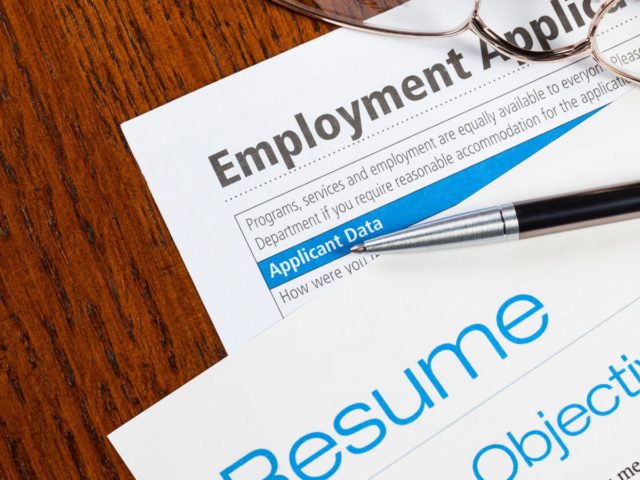Your resume is one of the most important components of a job search, so what should you include in it?
Before we get into what to include, let’s back up a bit and discuss the purpose of a resume. A resume is often your first impression with a recruiter or hiring manager. The goal of crafting a resume is to quickly and efficiently help employers learn about who you are and whether your experience and skills match the position they are looking to fill.
Though resumes for each job and industry will look a little different, there are a few key sections and useful tips that can be applied to any resume for any job.
What Should You Include on a Resume?
- Contact Information
Your contact information should always include your name, phone number, and a professional email address. If applicable to the job or industry, the contact information section can also include your professional title, social media handles, and a URL to your personal website, blog, or portfolio.
With the prevalence of remote work, it is optional to include your address. If you are applying to a role outside your local area, it may be worth noting that you are looking to relocate to avoid confusion.
2. Skills
The skills section is perhaps one of the most important areas of the resume. It’s a succinct summary of your best skills, a place to highlight keywords that match the job description, and the first section that recruiters and hiring managers will look at when reviewing your resume.
Include a list of relevant skills, tools, and certifications that match the job description. Read through the job description and pull out keywords that match your skills and include them in your skills section.
3. Work Experience
This section should make up the body of your resume, but you do not need to include every job you have ever had.
Here are the top 5 best practices for the work experience section on your resume:
- Only include your last 10-15 years of relevant work experience for the job for which you are applying. If possible, try to avoid leaving large gaps in your job history.
- List your past jobs in reverse-chronological order, meaning your most recent experience is at the top.
- Include the name of the company you worked for, perhaps with a brief description, your title, the dates of your employment, and up to six bullet points that outline your work and responsibilities at each job.
- Tailor your bullet points as much as possible to highlight your skills and experience that match the job you are applying for.
- Start each bullet with an action verb followed by a specific task and a quantifiable point.
- For example, “Spearheaded an email marketing campaign that lifted site traffic and increased email revenue 40%.”
Throughout your work experience section, add key skills to ensure that it is clear you are an excellent match for the job opening. Remember, the skills and requirements listed in a job description are potential keywords for your resume.
4. Education
The education section of your resume should include a list of your degrees and schools, written again in reverse-chronological order with your most recent degree listed first. Each entry should include your type of degree, your major, the name of your university, and any honors and awards you received. Skip including your GPA if you’re a professional. If you are a student, add it to your resume if it’s 3.5 or higher.
If you do not have a lot of applicable work experience for the job you are applying for, it might be worth including a description of what you studied and applicable projects that are relevant to the job.
Optional Sections to Include on a Resume
- Resume Summary or Objective
This is a short, 1-2 sentence section that explains who you are and why you are qualified for the role to which you are applying. This should be specifically tailored to the job you are submitting your resume for. Review the job description for keywords and which of your skills and experience will be most relevant.
Resume summaries and objectives are slightly different. Essentially, a summary is a good option to include if you have some relevant work experience that can be quickly summarized. An objective is most useful for a recent graduate who has limited job experience or someone who is switching careers. The objective should include your short-term goals. If you are switching careers, your objective should include a short statement addressing why you are switching and how your skills could transfer over to this new role.
It may be the case that neither a summary nor an objective feels appropriate to include on your resume. It is not always a necessary component; however, it can be a great way to showcase how your skills and experience align with the job (Indeed).
2. Certifications and Professional Memberships
If applicable to the job you are applying for, it may be helpful to include any professional memberships relevant to your field and certifications you did not already cover in the skills section of your resume. Be sure those you list are relevant to the job.
3. Achievements and Awards
If you have received any relevant professional awards or have key achievements that do not fit within your work experience section, you could highlight them in a section of their own.
Key Takeaways:
- Tailor your resume for each job you’re applying to. Review the job description for keywords and requirements and adjust your resume accordingly.
- Make your resume easy to read. Keep it simple and professional – hiring managers are often combing through hundreds of resumes – make yours easy to digest.
- Always include your name, contact information, education, and relevant experience and skills.
Now that you’ve got a great resume, check out Green Key Resources’ list of jobs we’re hiring for now and submit your new resume to apply!
Additional Sources:




